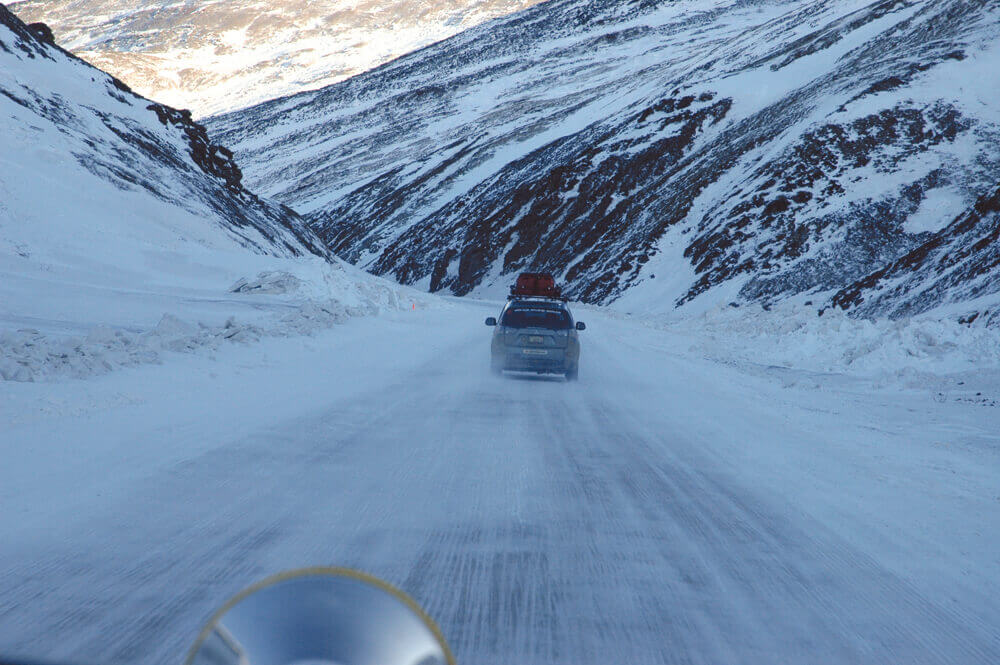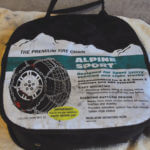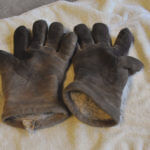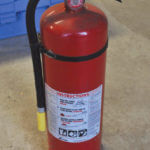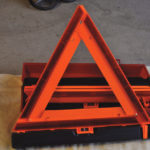Winter in North America presents a host of challenges. One of the most lethal can be traveling by car. Beyond the risk of sliding off an icy road and bending your car around a tree, the same minor accident can be life-threatening if you’re anywhere off the well-trodden path. However, if you have some common sense and you’ve packed a few simple supplies, you can be ready for anything Old Man Winter might have in store.
CAUTIONARY TALES

Two true stories illustrate the challenges of winter survival when your car has gotten well and truly stuck.
The first involves the Stolpa family, who decided to use minor roads to travel from Nevada to Idaho in late December, 1992. After leaving the main highway, the family became lost and their vehicle got stuck. Jim Stolpa managed to find a cave, in which his wife and infant child took shelter. He hiked to a town to get help—but at the cost of severe frostbite damage to his feet.
James Kim was not as fortunate. He and his family were driving in Oregon, got lost, and accidentally turned onto a Bureau of Land Management logging road. He died while trying to find his way out of the wilderness before rescuers could find his wife and child, who had stayed with the car.
In both cases, these families made a series of errors that led them to terrible grief. The first and most important mistake was for untrained people to leave well-maintained roads and then to keep going when the road was clearly too difficult for their vehicles. Second, neither family told anyone what they were doing or what route they planned to take, so no one knew where to look for them. (Search and Rescue authorities generally do not act until people have been missing for at least 24 to 48 hours, and that length of time can be deadly in winter.) Finally, neither family was adequately supplied for winter travel conditions.
The good news is that if you avoid the same mistakes, you can ensure that you will be in great shape to make it to your destination. If the worst does happen, you can be ready for that, too.
DON’T GET STUCK IN THE FIRST PLACE
Getting stuck in snow or ice is annoying at the best of times and can also be life-threatening, so your best course of action is to avoid the scenario. But, for most, winter travel is a fact of life and sitting at home by the fire with a hot beverage may not always be possible.
To help you get where you’re going, here are a few winter driving tips:
- Tell someone where you’re going. This is as simple as a call or an e-mail to friends or relatives to say where you’re going, when you’ll be there and a note that if they haven’t heard from you by some reasonable time, to sound the alarm.

Good winter tires are absolutely essential if you want to drive in winter conditions. Many people keep their winter tires on a second set of wheels to make it easy to respond to snowy weather.
- Invest in appropriate tires. Ask yourself if your tires are really ready to handle the roads where you need to go. A spare pair of wheels from craigslist and two snow tires can generally be bought or assembled for about $300. (Make sure you test them before you really need them.) In some areas of the country, or if you have an all- or four-wheel drive vehicle, it’s recommended that you drive on four snow tires. Alternatively, you can carry chains, but these are miserable to install and hard to drive on.
- Stay on maintained roads. Most winter disappearances happen because people decide to take a shortcut or they choose a minor road that doesn’t get plowed. Either way, those roads take you far from assistance and potentially into tough terrain.
- Know when to bail out. The problem with so many of today’s 4WD and AWD vehicles is that they will get you just far enough so that you’re well and truly out of luck when they can’t get you any farther. You might have to swallow a little pride, but the first time you have doubts about your route is generally the time to turn around.
- Carry your winter safety kit at all times. This kit can be as simple as a cardboard box in the trunk or as elaborate as you want. But keep the basics of traction on hand, even if it’s just a big bag of sand or rock salt. Note to self: Make sure you keep it dry or it will end up becoming a frozen rock that’s no help when you’re stuck.
- Don’t go too fast. Your AWD or 4WD vehicle is great at getting moving but only a little better than a regular car at turning; and when it comes to stopping, these systems give you no real advantage. So, if you find yourself going into a corner too fast, you’ve got nothing in reserve. Take it easy, and get where you’re going. Remember, slow and steady wins the race.

- Learn to steer your way out of a skid. Racing and rally drivers know that your car tends to go in the direction you’re looking. That’s because your hands are smarter than your brain. If your car starts to slide, don’t look at the ditch or the tree—look down the road in the direction you want to go. Physics always has the last word, so this doesn’t work every time, but it works often enough.
YOUR WINTER SAFETY KIT
There’s no need to go out and spend a bunch of money to buy a pre-made winter kit. The checklist provided in this article will help you make your own winter safety kit that will prepare you for almost any situation—and be made of higher-quality stuff than the assembled kits. You can make up your kit a few pieces at a time, and you probably have most of this stuff in the garage already. Most of the rest can be found inexpensively at a thrift or surplus store.
In addition, note that your ideal kit might vary from this list. Use your own experience and advice for your region of the country to tailor this list to your needs. You can put everything in a plastic tote or even a cardboard box— whatever works for you!
Traction pads. These are foldable, ribbed, plastic plates that go under your tires to help get some grip. You can even use a piece of expanded metal. The point is to have something you can wedge between your tires and the ice and snow to achieve enough traction to get going.
Bag of sand. An ordinary bag of playground sand from the home supply store can turn ice into a drivable surface. Keep it dry so it doesn’t freeze into a useless clod.

An old towel in your kit has 100 uses, from an emergency blanket to a pillow to a flag you can wave to get attention.

Traction plates will get you out of a lot of marginal situations, and they don’t cost or weigh much. Some can also be used to move snow away from your wheels.

Important tools include an ice and snow sweeper/scraper and a folding shovel and pick. Get high-quality tools, and you’ll never be sorry.

A fresh tow strap is a necessity. You don’t want this to break at the moment you need it most. The greater the load and breaking rating, the better.
Entrenching tool. A folding shovel, often with a pick, is a compact tool that can really come in handy. Your local military surplus store will have a good one. Camp shovels and the lightweight shovels included in winter safety packages are generally not adequate for the task.
Tow strap. Get a new one and keep it in its package and stored away from sunlight until you need it. Ropes, bungee cords, tie-down straps and the like just aren’t strong enough and UV light can weaken the strap.
Spare tire. Winter weather hides a lot of road hazards and, if your spare is a balding summer tire, you’ve got potential headaches ahead. Seasoned winter drivers in extreme climates often buy six wheels and snow tires and carry two spares.
Road flares. These are excellent for alerting others to danger and being noticed if you’re in a bad situation. You can also use these to start a fire if you need one. NEVER light a fire inside your vehicle.
Reflective triangles. Use these to warn other drivers that your car is stuck up ahead. Place them around the nearest corner or far enough away so that drivers have time to slow down. Experienced winter drivers will expect to see your car on the same side of the road where you placed your warn markers.

Fresh water. Carry several quarts of bottled water for drinking and potentially for your car’s radiator. Be sure you keep these from freezing.
Food. Cereal bars are compact, they store well and will help you with energy. Trail mix, jerky—all the usual storage-stable choices— should be in your kit. Pack enough to feed everyone a reasonable diet for three days or more, depending on your area and distances you drive.
Warmth. Mylar space blankets fold up small and hold in body heat very well. They are silver on at least one side, so they can also be used to draw attention to your location. In addition, you can get some heating packets for added comfort. Don’t forget a parka, a couple of pairs of warm gloves and socks and a ski cap and scarf (you might have to work outside your car for an extended time).

First aid. Have a good first aid kit on hand. Ask about a serious kit at your outdoor or military surplus store. Include a supply of any important family prescription medicines in the kit.
Carbon monoxide detector. Passive monoxide detectors can be purchased for as little as $10, and they last up to 18 months from the moment you open them. Put one or two into your safety kit and open them if you get stuck and have to run your engine to stay warm.
Mental health. Toss in a deck of cards, some writing supplies and a good book or two. You might be there a while.
Fire extinguisher. It’s always a good idea to carry one, but if your car gets stuck off the road, the risk of fire goes up.
Light sources. There are lots of options from keychain lights to long-burning candles. Plan the combination you’ll need to have what it takes to light the inside of your vehicle, your path and to rescuers. While candles also provide some warmth, be sure to open a window enough to allow combustion gases to escape and allow fresh air in.
Satellite phone. If you’re really heading far away from civilization, a rented satellite phone could be worth the expense.
Personal locator beacon. These can be purchased or rented, and they send out a basic radio signal that helps rescuers find your location in an emergency.
Extra fuel. Up in the Arctic, they have a rule: Never pass a gas station without stopping. In the far North, there could be more than 200 miles between towns and service stations. You might make it almost all the way to the next services and be forced to turn back, so take every opportunity to keep your tank full, as well as a spare can on the roof or in the trunk—but never inside the car!
Advanced driver training. Many areas offer classes in winter driving using the SKIDCAR system. This is a device that removes weight from the wheels of a training car, thereby simulating snow or ice conditions. You can be in a clean parking lot in July and still practice your winter driving skills. A one-day class in a SKIDCAR is just a few hundred dollars and is well worth the investment.
IF YOU GET STUCK
Getting stuck happens. Even the best, most prepared drivers sometimes find themselves backed into a ditch and waiting for someone to pull them out. Back-country regulars equip their vehicles with winches, cables and more so they can pull themselves free. However, for most of us, getting stuck means waiting for help. So it’s a good idea to review these survival guidelines for the worst-case scenario.

Stay with your vehicle if possible. In general, your car will be the best shelter you can find. If you told someone your planned route, people will be looking for you pretty soon. If you have an adequate supply of fuel, your car will be warm and dry for days. Even if you can’t run the engine, your car is insulated. Your car is also big, so it’s easier to spot.
Take stock of damage to your vehicle. If you crashed, don’t worry about the paint and sheet metal. Try to see if the exhaust pipe was crushed at any point and check to make sure the fuel tank and fuel lines are not leaking. If you smell gasoline, your car is no longer a safe refuge. If your radiator or cooling system was punctured, you won’t be able to run the engine for long or get heat in the cabin. Also check the battery connections to make sure the battery is not cracked or creating a short circuit.
Make sure you’re not in an impact area. If you crashed going around a curve, chances are good that the next car coming up the road will end up in the same place. If you think there’s danger of a secondary crash, place your road flares or triangles around the corner on the same side of the road where your car is stuck. You must give other drivers enough time and distance to slow down and avoid you.

That triangle is way too close to the car to do any good. She’s going to get hit.

Don’t stand in an impact area like this driver is doing. If you landed here, the next guy could be sliding into you at any moment.
Make sure you’ve cleared the intake and exhaust areas. Your car needs to breathe so you can breathe. That means keeping the cabin air intake, engine air intake and engine exhaust free of ice, snow, mud, water and any other obstructions. Use your shovel to dig out around the exhaust pipe and remove snow. Then, start the car and check for exhaust flow. If the exhaust is leaking under the car or around the engine bay, it can get into the cabin air intake. Most cabin air intakes are around the base of the windshield. You may need to open a window to get fresh air in.
Turn off the air conditioning. This uses energy and will deplete your fuel faster. On the other hand, leave the lights on at night to help searchers find you. Honk the horn periodically during daylight hours.
Be mindful of basic rules of asphyxiation. If you feel a dull headache, weakness or dizziness, have nausea or vomiting, shortness of breath, confusion, blurred vision or if someone loses consciousness, turn off the car and get yourself or them out into fresh air immediately.
Be ready to be rescued. Have your tow strap ready in case someone happens by.
THE MOST IMPORTANT TOOL: YOUR MIND
By doing some advanced planning and taking the necessary steps to be prepared, you greatly improve your chances of survival in such situations. But, as in all survival situations, your mind is your best asset. Even if you don’t have everything you’d like or need, stay calm and think about your situation to come up with solutions. Panic kills, and that’s one factor we can remove from the equation right from the very beginning.
Editors Note: A version of this article first appeared in the March 2016 print issue of American Survival Guide.


